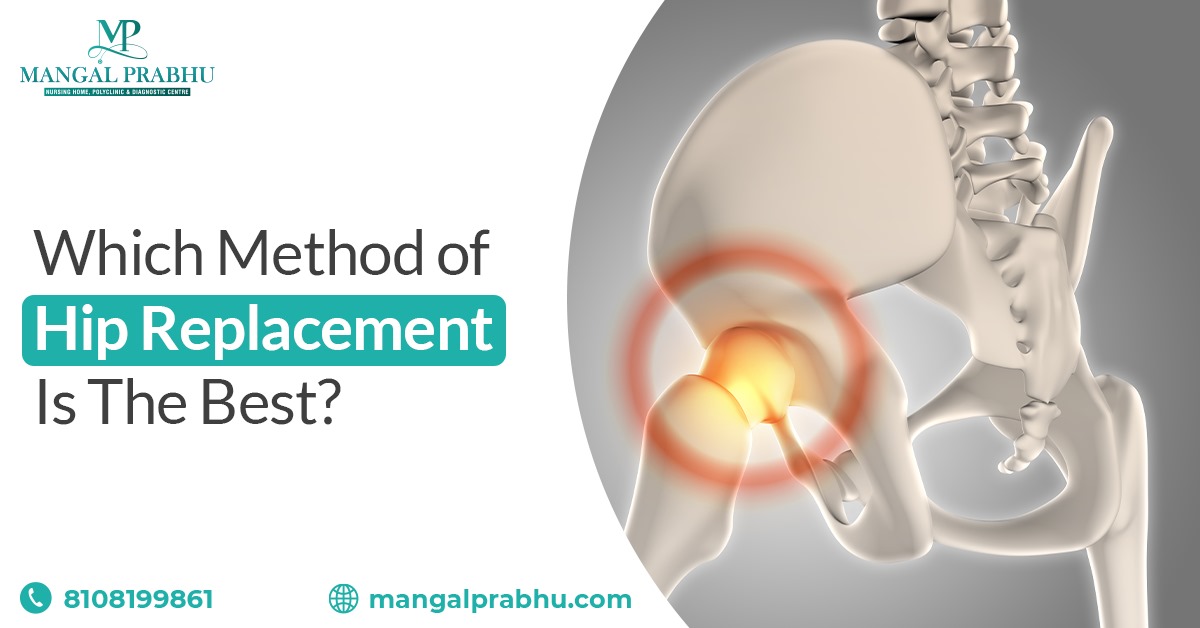
Which Method Of Hip Replacement Is The Best?
Introduction
Hip replacement surgery is a common orthopedic procedure to relieve pain and improve mobility in individuals with hip joint issues. However, with various methods available, patients often wonder which is the best approach for their specific condition. Here, you can explore different types of hip replacement procedures and their advantages and disadvantages. It will help you understand which hip replacement method is most suitable for you.
Different Types of Hip Replacement Procedures
Hip replacement surgery offers several approaches tailored to the patient’s condition and requirements. The three primary methods are:
1. Total Hip Replacements
Total hip replacements involve replacing the hip joint’s ball and socket with prosthetic components. This procedure is suitable for patients with severe arthritis, joint degeneration, or significant damage to the hip joint.
2. Partial Hip Replacements
Partial hip replacements, also known as hip hemiarthroplasty, involve replacing only the damaged or diseased portion of the hip joint, typically the ball component. This method is often chosen for specific hip fractures or conditions that affect only one part of the hip joint.
3. Revision Hip Replacements
Revision hip replacements are performed when a previous hip replacement has failed or needs to be replaced due to various reasons, such as wear and tear of the prosthetic components or infection.
Advantages and Disadvantages of Each Method
Each method of hip replacement has its unique advantages and disadvantages:
Advantages of Total Hip Replacements
- Effective for severe hip joint damage.
- Provides long-term relief from pain and improved joint function.
- Suitable for various hip conditions, including osteoarthritis and rheumatoid arthritis.
Also Read: Lifetime Precautions After A Hip Replacement
Disadvantages of Total Hip Replacements
- More extensive surgery with longer recovery time.
- Greater risk of dislocation.
Advantages of Partial Hip Replacements
- Smaller incisions and less bone removal lead to quicker recovery.
- Reduced risk of dislocation.
- Suitable for specific hip fractures or localized joint damage.
Disadvantages of Partial Hip Replacements
- Limited applicability to certain conditions.
- It may require a second surgery if the entire joint deteriorates over time.
Advantages of Revision Hip Replacements
- Corrects issues with previous hip replacements.
- Replaces worn or damaged prosthetic components.
- Restores joint function.
Disadvantages of Revision Hip Replacements
- It is more complex than primary hip replacements.
- Longer recovery and rehabilitation.
Which Method of Hip Replacement is the Best?
The choice of the best method of hip replacement depends on individual factors, such as the patient’s age, the severity of the hip condition, and the surgeon’s assessment. There is no one-size-fits-all answer to this question, as what works for one patient may not be suitable for another. The decision should be made in consultation with an experienced hip replacement surgeon, such as a Hip Replacement Surgeon in Navi Mumbai at Mangal Prabhu Hospital. A skilled surgeon will conduct a thorough evaluation, consider the patient’s needs, and recommend the most appropriate treatment method.
Conclusion
In conclusion, there is no definitive answer to which hip replacement method is the best, as it varies from patient to patient. The choice depends on individual circumstances and the expertise of the surgeon. What is essential is that patients seek expert care from facilities like Mangal Prabhu Hospital, which specializes in Hip Replacement Surgery in Navi Mumbai. With the guidance of experienced professionals, patients can receive the most suitable hip replacement procedure to improve their overall quality of life.
